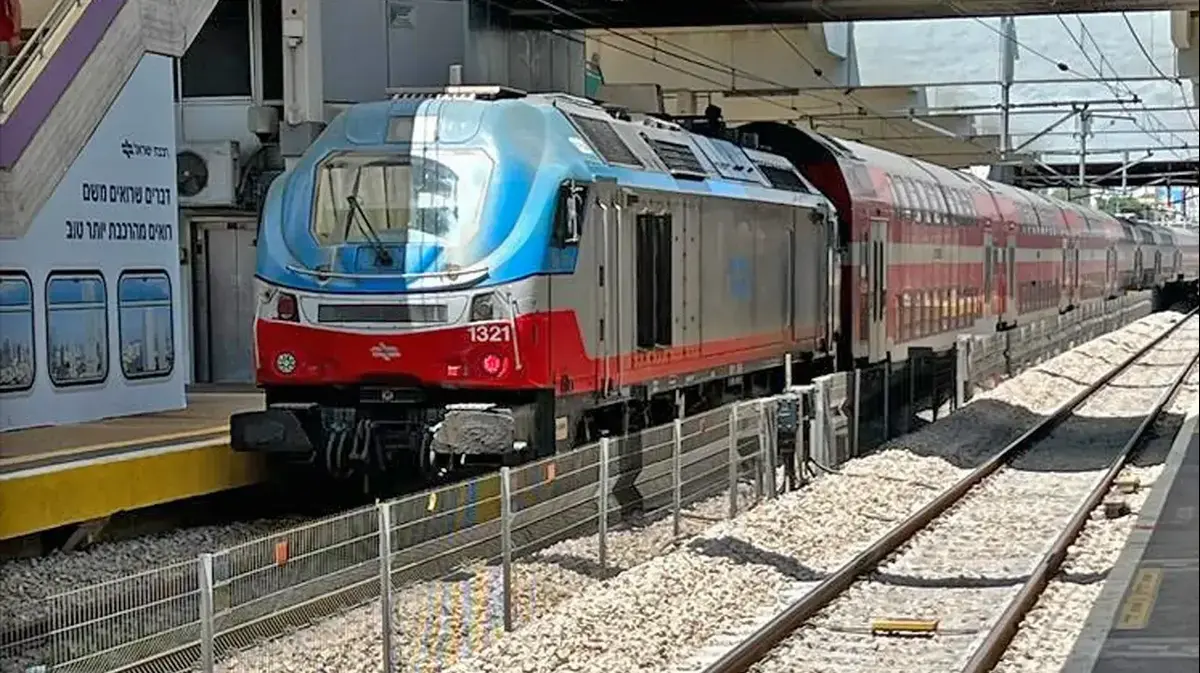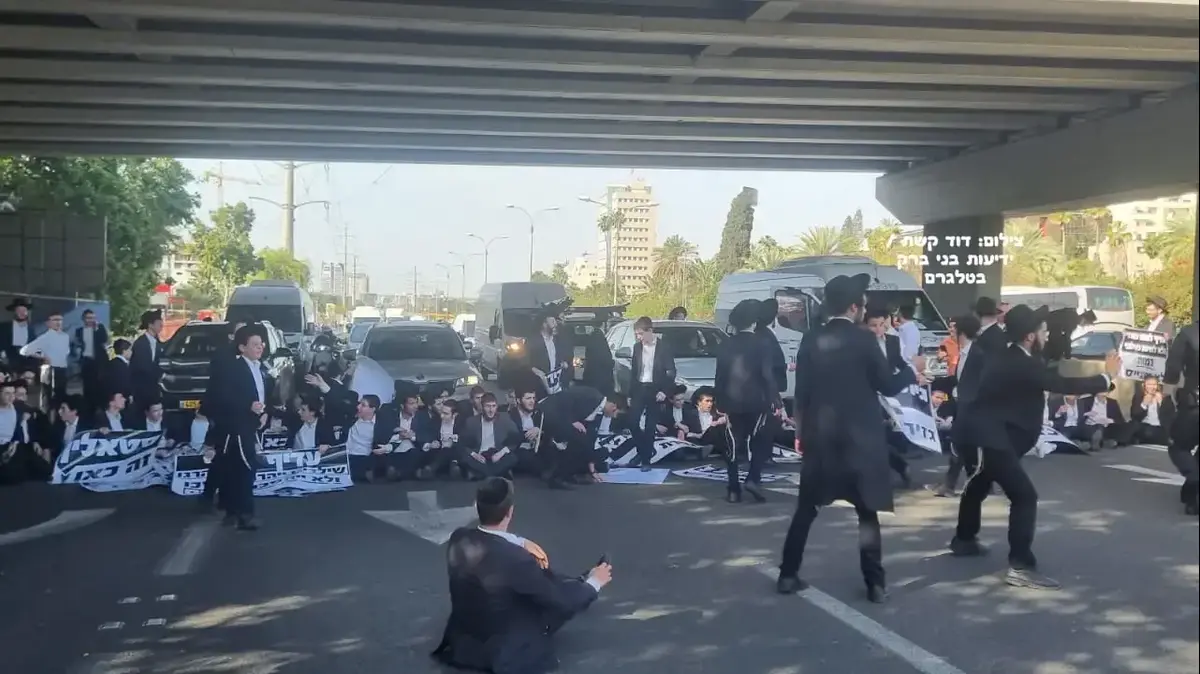Of money
All articles
Where you see traffic jams, there are those who are looking for the next "carrier"
If you're stuck in traffic right now, this article is for you: After a year-long break, it seems like the Smart Mobility Conference, the founding event of the high-tech transportation industry, has exploded into innovation, entrepreneurship and hunger to storm the changing world of transportation.
Here are five companies that caught our attention
Tags
Merav Michaeli
Amnon Amusement
Hi-Tech
start up
Mobilai
Keenan Cohen
Sunday, 14 November 2021, 08:48 Updated: 09:16
Share on Facebook
Share on WhatsApp
Share on general
Share on general
Share on Twitter
Share on Email
0 comments
"Entrepreneurship" is the magic word of the Israeli high-tech industry in general and of auto-tech in particular, for most of us it is a completely abstract concept whose practical meaning is not always clear, but for those who attended a two-day smart mobility conference sponsored by relevant government ministries, it was possible Feel it in the air, with a living, thick and tangible presence that hovered among the dozens of exhibitors in the David Intercontinental conference space in Tel Aviv.
Considering the fact that in the portfolio of the Israeli car industry are mainly coveted pockets like Susita and Rom Carmel, when it comes to auto-tech, we are a world power that draws the enormous attention of car manufacturers. Some of them,
such as Mercedes, GM, Renault-Nissan-Mitsubishi, Hyundai and others, have development centers and innovative laboratories here and many others operate locating and accompanying projects in companies in the field, from Volkswagen to Chinese Gili, the parent company of Volvo, Lotus, LYNK & CO, Ziker and more through Its innovation arm is CEVT.
The conference, which has been held for several years and was canceled last year, was flooded this year with a dizzying amount of startups, some in the maturity stages and showcasing existing and active products, some still in various stages of development and some within concept and vision.
But everyone without exception is seeking the attention of world-class manufacturers or entities of the automotive industry, micro-mobility and the worlds of smart transportation infrastructure.
More on Walla!
Coexistence on a plate: Roots Restaurant in Acre
Julia Frilik-Niv
To the full article
Prof. Amnon Shashua in the exhibition.
Will any of the startups featured in it be the next "Mobilai"?
(Photo: Ripley Productions, Azrifer Palace)
So between the speeches of Transport Minister Merav Michaeli who encouraged the spirit of entrepreneurship, the presentation of Prof. Amnon Shashua, CEO and founder of Mobilai - about the next stops on the way to the autonomous car (price, mapping), and Daniela Gera Margaliot, who heads the Prime Minister's Office. The exhibitors and from the dozens of amazing companies that grow here,
for example WATERGEN which actually produces water from the air in a vehicle-mounted facility, viisights that monitor driver behavior via video cameras and alert those who may lead to an accident to the race cars built by Be'er Sheva students. Note: Companies whose product is mature and available and can make a real difference in their field,
two of them in the bloody field of two-wheeled casualties, which is unfortunately on the rise, and three more companies from the world of smart infrastructure, the next generation of autonomous car radars and artificial intelligence.
Arbe's autonomous car (Photo: ARBE Robotics)
Arbe: Can't see with my eyes
The vision of the full distribution of fully autonomous cars is still far from us for many years, but it is already clear that one of the basic cornerstones on which it will rest, is the ability to visualize at the highest level of what is happening around it.
This is exactly the world in which the Israeli company Arbe has been operating since 2015.
Its technology base is advanced chipsets, which through continuous transmission of signals at varying frequencies produce "mapping" and are able to produce a detailed image of the objects in the car lane including tracking hundreds of objects simultaneously.
The company recorded two important landmarks this year when in April it was announced as the radar systems supplier for the Chinese autoX with a volume of about 400,000 systems.
autoX invests in Chinese carmakers such as Saik (MG's parent company) and Dongfeng develops autonomous vehicles, including taxis that are already active in China and operates test cars in California.
The second milestone was last month, when the merger deal with the American ITAC was completed in a SPAC deal in which the company raised $ 118 million and entered trading on the NASDAQ.
The end of arguments with rental companies?
Click ins (Photo: clic ins)
Click ins: Goodbye to the car appraiser
The Israeli start-up Click ins is about to completely change one of the sacred rituals of the process of returning cars to rental companies - the car's careful examination in search of damages added while using the vehicle.
To this day, and in fact in the vast majority of companies the process is carried out as has probably been done in recent decades, the rental company representative and customers circle around the car and document on the page with the car chart the damages, the account if any will be submitted separately, cold.
Okay, so that may change and as soon as more and more rental companies start using the Click ins solution for the situation. The company, founded in 2014 by Eugene Greenberg (who serves as CEO) and Dmitry Geisersky (VP of technology), uses a remarkably detailed and accurate three-dimensional model of the car and its comparison to photos taken by any smartphone on which the app can be installed.
By comparing the images and artificial intelligence of the product, Click ins can provide not only accurate documentation, but also assess whether these damages exist or have been added recently and even when based on prior information it accumulates.
Hence the path to closing the circuit with repair damage repair is short.
His future field will adopt this technology will bring about a huge revolution, is the car insurance market which is currently based on human appraisal in a process that is often slow, requires a lot of experience to reach a high level of accuracy in execution and consequently also more expensive than Click ins solution.
Avis was the first to use this technology in its fleet of leasing cars and recently the rental company Shlomo Sixt also joined and it will incorporate the technology in its rental system.
Micro radar on ANACHOIC scooter (Photo: anechoic)
Anachoic: Scooters first
Electric scooters in general and cooperative in particular broke into our lives less than a decade ago and it is already difficult to see them planted in the urban landscape of Gush Dan. But along with the increase in their use comes the less sympathetic aspect - the multiplicity of casualties due to careless riding, the danger of the vehicle itself and the injuries of the riders themselves who have no real protection other than an open helmet at best.
Anyone who wants to try to take this safety issue to a better place is the Israeli ANACHOIC. The company already has an active system called HAALO that uses a 360-degree micro-radar to scan the rider's environment that provides audio alerts about threats and dangers around it and is installed in motorcycle helmets. The company's warning systems have also been adapted for use with electric scooters in such a way that they scan the space for detection of disturbances and dangers and will provide a warning to riders.
The first company to implement these systems is LIME, the operator of the cooperative scooter service, where the main mass of tools equipped with these systems will start operating next year.
ANACHOIC's system will have another application using scooter fleets due to its ability to accumulate and transmit riding information so that a rider's profile can be built, mapped areas where more alerts are recorded as problematic places and if necessary limiting speed or recommending other lanes.
Ride vision: front camera and rear camera that produce safety alerts for the rider (Photo: Walla !, Keenan Cohen system)
Ride vision: The rider of motorcycles
The last two years have been one of the deadliest for two-wheeler riders. The combination of road congestion, parking shortages and the search for an alternative to unstable public transport, leads more and more people to choose two-wheelers as a solution, but when it comes to rider training, knowledge of emergency riding and motorcycle control - the field of driving studies is lacking.
And this combination of many riders, inexperienced, in a challenging transportation climate is an explosive mix that comes up in the lives of dozens of riders a year, far beyond their relative share of vehicle status.
And as in the warning systems of scooters, where the state does not take action, it is the private market that produces solutions. Ride vision, founded by two motorcyclists at the end of 2018, has set itself the goal of producing a camera-based "safety shell" for two-wheeler riders and about a year ago began marketing the system commercially to private customers alongside making connections with motorcycle manufacturers and motorcycle system suppliers such as Continental AG and others.
The system uses two cameras, front and rear with an extra wide angle, which together cover almost 360 degrees around the motorcycle.
Using a sophisticated image processing system (which also includes the ability to analyze what is happening when the motorcycle is tilted) and artificial intelligence, the Ride vision produces a series of rider safety alerts such as non-keeping distance, frontal collision alert, bypass alert and vehicles in the rider's "dead zone" .
The alerts are displayed on a row of lights located on the mirrors and in addition the rides are documented including location and speed data in a dedicated app.
No Traffic - Communication between vehicles and the traffic light infrastructure (Photo: no traffic)
No Traffic - a big cheap change
While the world of cars has gone on, progressed and changed beyond recognition, from the first electric traffic light in 1914 to the present day, it is hard to say that this facility has undergone far-reaching changes. It is still operated by a number of methods and most often under an automatic timing mechanism, sometimes also using ground sensors that indicate the presence of cars waiting for a green light.
This gap is only one side of the story, the growing challenges of managing traffic in quantities of vehicles today not only in cities but even in places like major airports, require a change in the infrastructure that manages it.
No Traffic's system takes these mechanisms a few steps further. Through communication between vehicles and the traffic light infrastructure (so-called X2V), cameras, sensors and artificial intelligence know how to monitor road and traffic conditions, the number of vehicles and their types, pedestrians and turn it all into a system of optimal, flexible and completely independent traffic lights without human intervention .
Another capability of the system is for example to allow a "corridor" for the rapid movement of emergency and rescue vehicles by controlling the traffic lights in their travel lane.
One of the benefits of the No Traffic product already installed in the cities of Phoenix, Tucson and Chandler in Arizona as well as the Central Silicon Valley traffic lane in California is that it can be installed quickly, within hours and is less expensive than expensive and complex sensor network solutions.
In addition to its operations in the United States, the company is currently developing its markets in Europe and Asia.
What about Israel?
Good question, right now, when they're concentrating on business potential, we're still not high on the list.
Share on Facebook
Share on WhatsApp
Share on general
Share on general
Share on Twitter
Share on Email
0 comments







